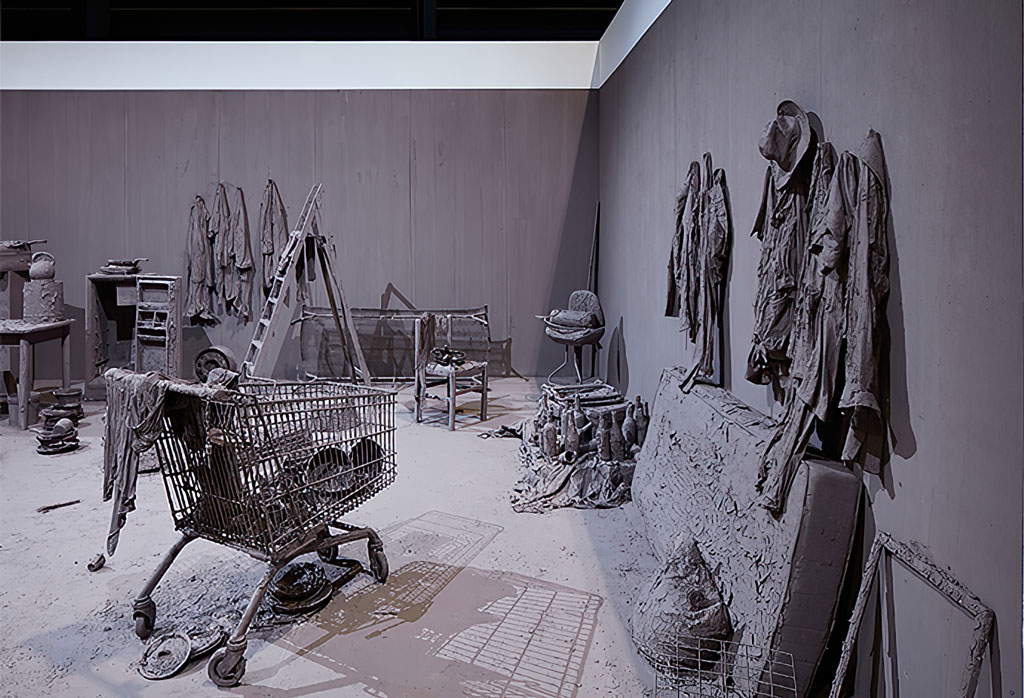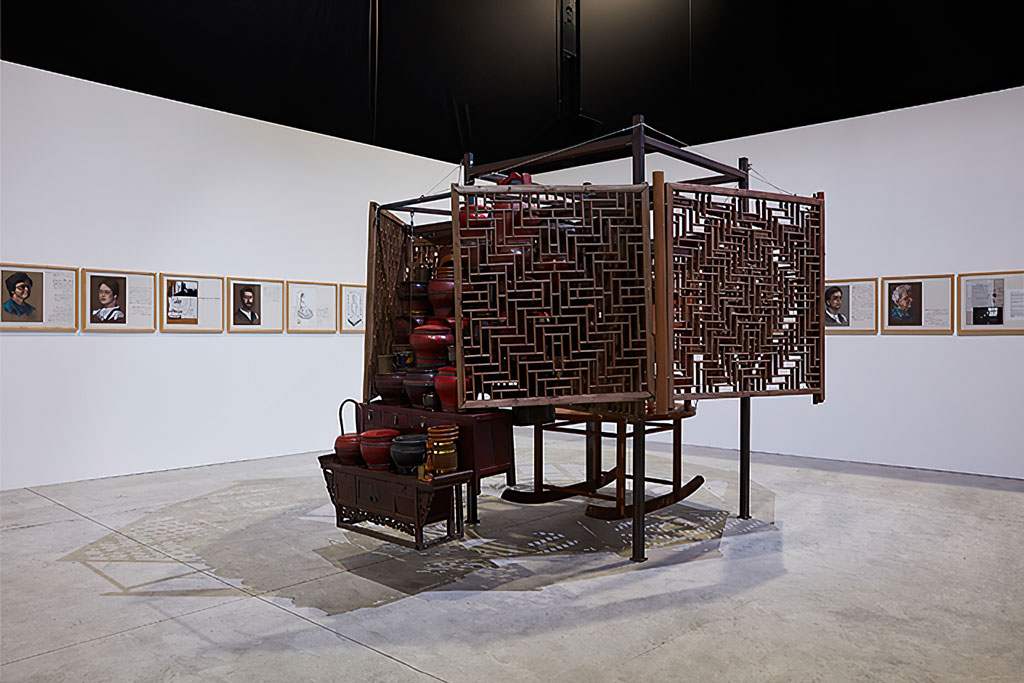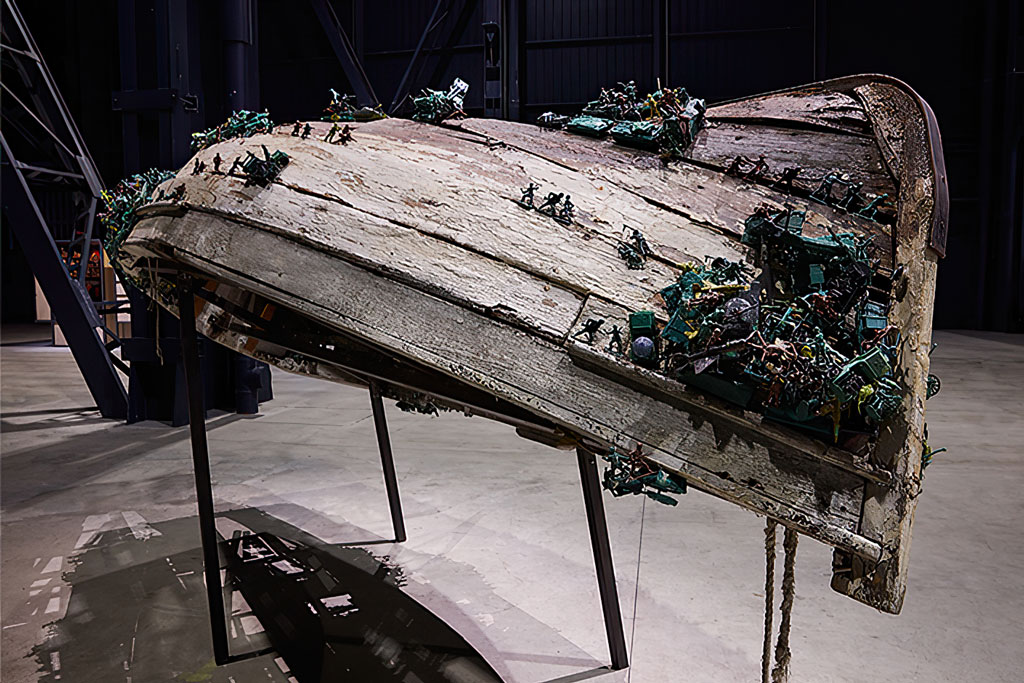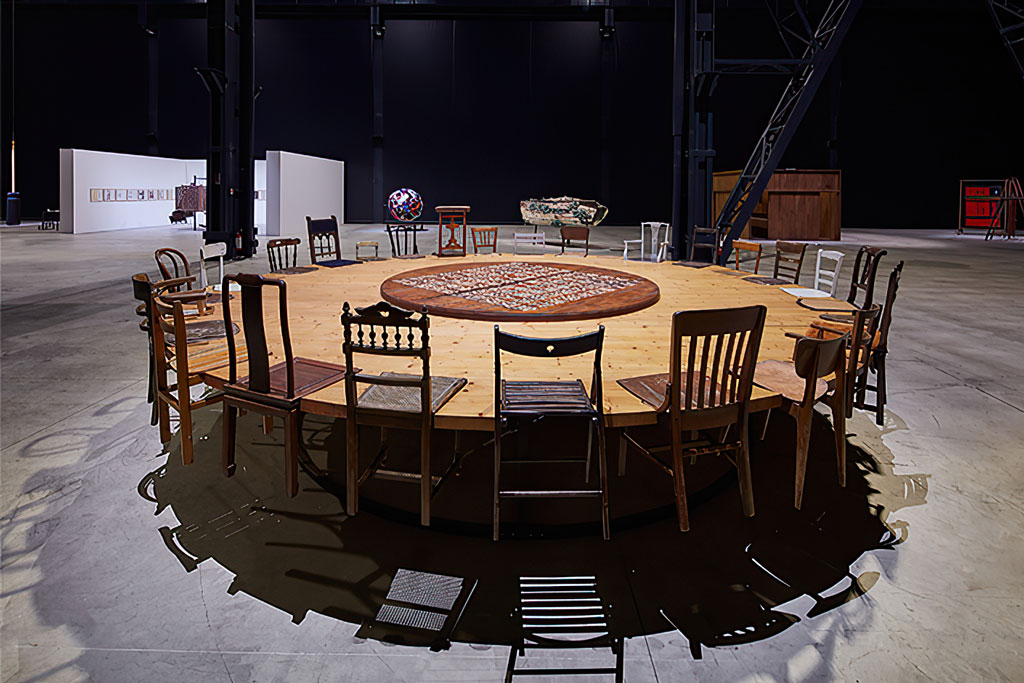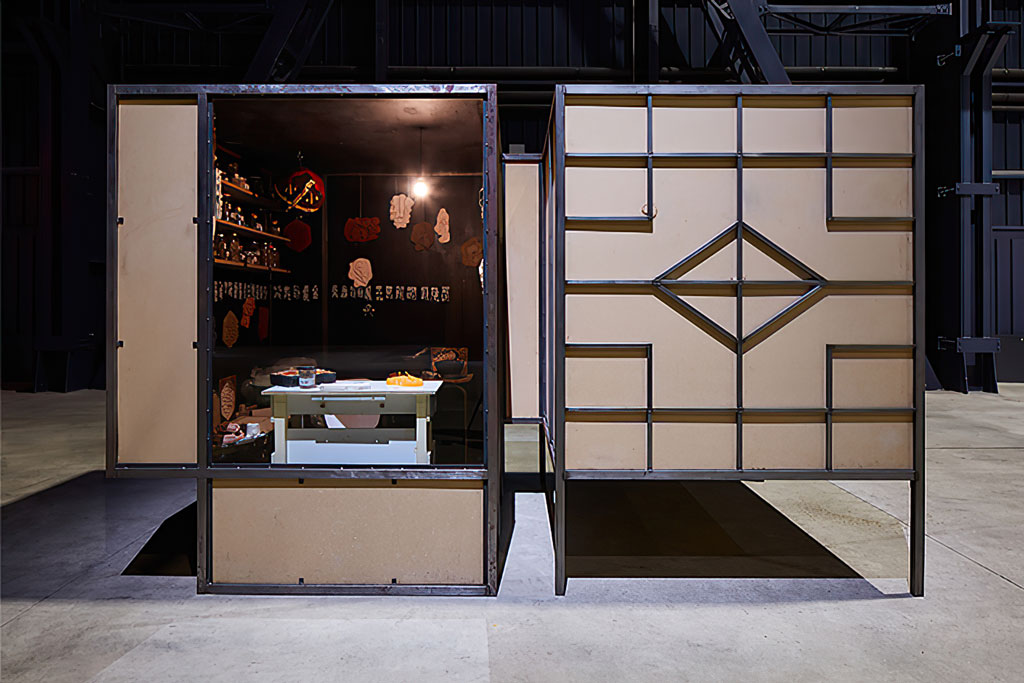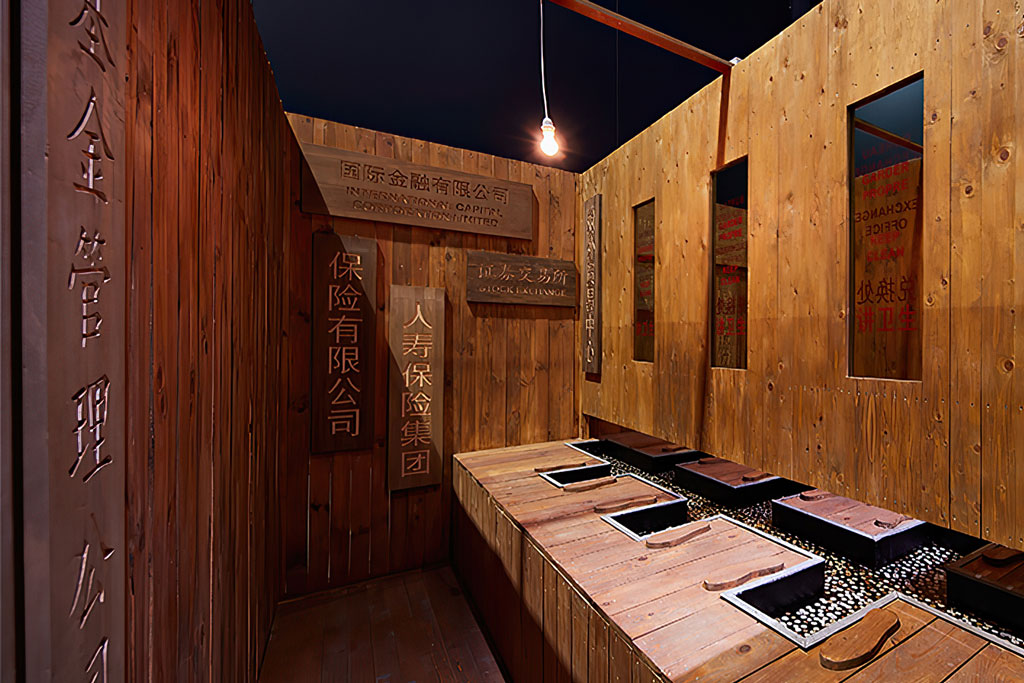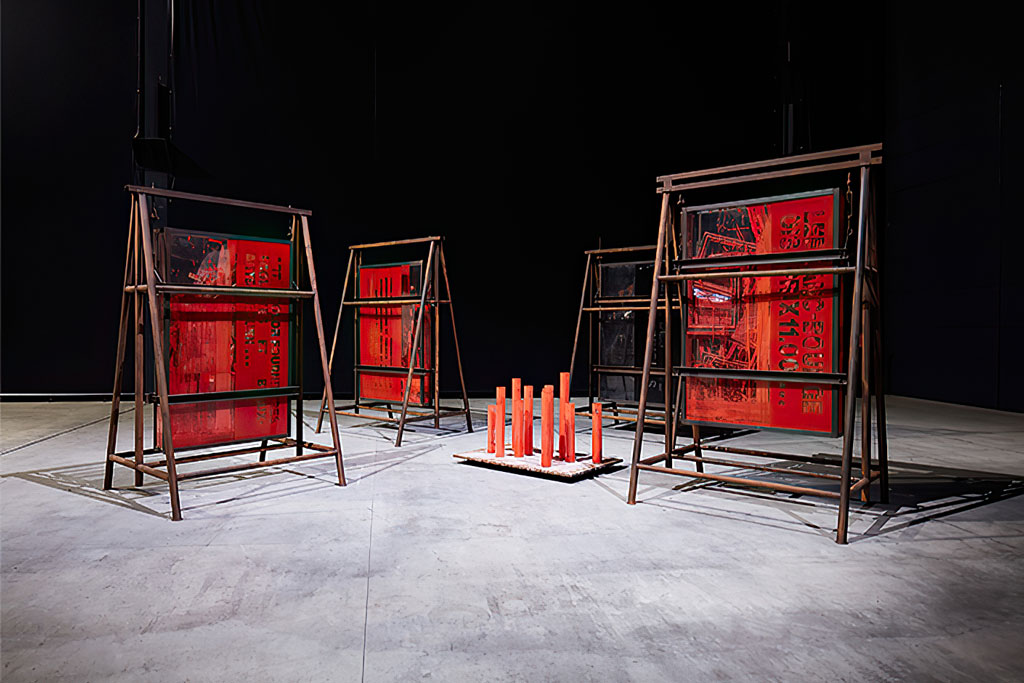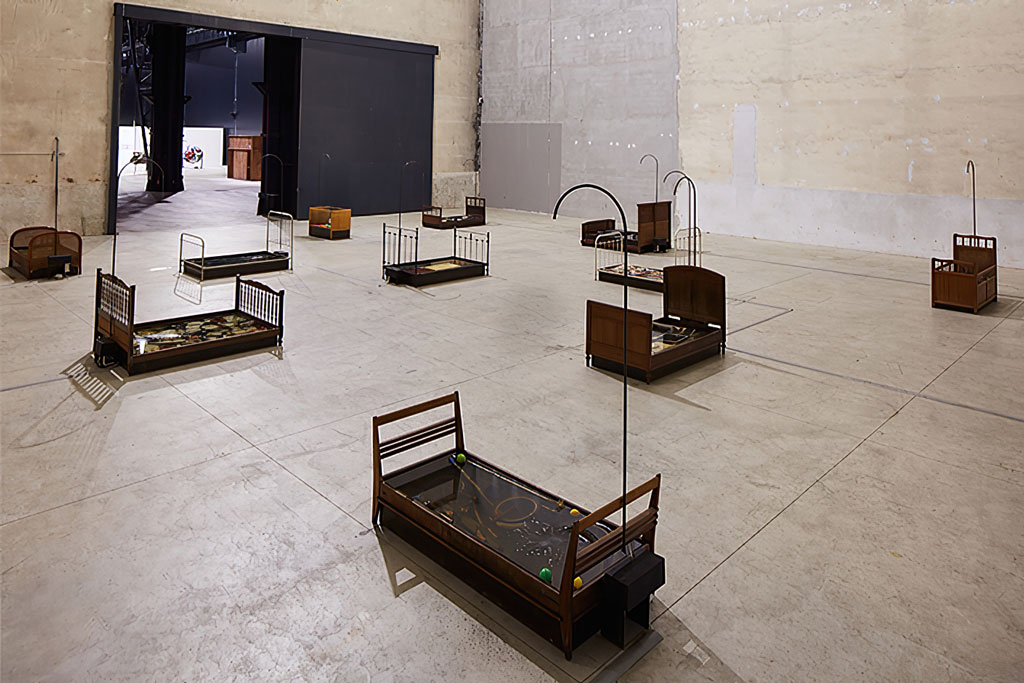ART-PRESENTATION: Chen Zhen-Short-circuits
 Chen Zhen’s artistic poetics, which ranged from inter-national politics to a more intimate and personal view of human life, organically integrates the aesthetic of his homeland with those of the places with which he came in contact. From this perspective, a key concept to understand his artistic practice is that of transexperiences. The term, coined by Chen Zhen himself, “effectively and profoundly synthesizes the different experiences lived through when you leave the land of your birth and move from one place to another”.
Chen Zhen’s artistic poetics, which ranged from inter-national politics to a more intimate and personal view of human life, organically integrates the aesthetic of his homeland with those of the places with which he came in contact. From this perspective, a key concept to understand his artistic practice is that of transexperiences. The term, coined by Chen Zhen himself, “effectively and profoundly synthesizes the different experiences lived through when you leave the land of your birth and move from one place to another”.
By Dimitris Lempesis
Photo: Pirelli HangarBicocca Archive
The exhibition “Short-circuits” is conceived as an immersive exploration of Chen Zhen’s artistic research and brings together more than 20 large installations realized between 1991 and 2000. The exhibition presents works created by assembling everyday objects, like beds, chairs, news-papers and clothes, with assort-ed materials, such as wood, clay, water, fabrics and glass, thereby displaying Chen Zhen’s personal vision of the human experience in all its complexity. The title “Short-circuits”, a concept on which Chen Zhen based his creative method—is a reference to the many interpretations that arise from the encounters of ideas with juxtaposed elements in the artist’s works, such as tradition and modernity, center and periphery, spirituality and consumerism. The monumental installation “Jue Chang, Dancing Body – Drumming Mind (The Last Song)” (2000) is composed of beds, chairs and stools whose surfaces are covered in cow-hide. The complex composition, which suggests a large percussion instrument, spans through an area measuring 18 × 14 meters. Created by Chen Zhen using elements from different places and contexts, it forms what he called a “relational installation” expressing his interest in the transformation processes that underlie the relations between both objects and people. Connected to the care we take of our body and spirit, the work can be activated by dancers who brush their hands across and drum on the leather surfaces, resembling the movements used in Chinese massage. The work is among the few realized by the artist that have a performative approach and, as evoked in the title, the human body is an essential element. The sound produced is closely linked to an action inherent to an individual and spiritual dimension. Presented at MAGASIN – Centre national d’art contem-porain de Grenoble in 1992, the installation “La Voie du sommeil – Sleeping Tao” (1992) is formed of metal bed-like structures. Their composition is a reference to the kang, a traditional oven-bed used in the North of China that has an upper surface heated by coal during the winter months, on which the body lies. On top of each structure, the artist placed three lightboxes that show mountains of waste evocative of rocky landscapes, ironically hinting at an environment that is anything but natural. As Chen Zhen comment-ed, the installation appears as “a sort of therapeutic “meditation wall” that symbolizes the three phases of Taoism: the cyclical mutation of matter, the importance of belief, the redeeming power of memory” (these three expressions are shown on each lightbox). The work includes several everyday objects—such as stoves, books and metal objects, each type placed respe-tively in the three structures—which seem to imply the presence of man, whose body is alluded to by the idea of empty beds. The strong red light creates a profound, meditative atmosphere, recalling fire and contrasting with the white light in the three lightboxes. Through his practice, Chen Zhen ponders on the contra-dictions of life in China, where an increasingly consumer lifestyle exists alongside religious traditions (such as Buddhism), and the aspiration for detachment from mate-rial goods. The installation“Fu Dao / Fu Dao, Upside-down Buddha / Arrival at Good Fortune” (1997) takes the form of a Buddhist temple; the metal structure approximately 3 meters high provides support for dense bamboo branches on which everyday objects are hung, such as car parts, a bicycle, and electronic elements. The work has its origin in an intuition that the artist had in a restaurant in Shanghai: having seen the sign of the term fu (happiness, good fortune) upside-down, Chen Zhen realized that the ideograms of fu dao (fortune upside-down) are homophonous with those of fu dao (the arrival of good fortune). The double connotation, which also means “upside-down Buddha,” was literally interpreted by the artist who included in the work a number of overturned figurines of the Buddha.
“Daily Incantations” (1996) is composed of 101 chamber pots ar-ranged in rows on a large semi-circular wooden structure that resembles an ancient Chinese musical instrument called bianzhong. Signifying the allegory of the modern world and the waste that it produces, at its center the structure has a large sphere made from curved metal bars, that contains electric wires and parts of electronic devices. The idea of the work originated during one of the first trips the artist made back to Shanghai in 1996, after spending a number of years in the West, when one day at dawn he came across several women washing chamber pots close to one of the city’s well-known hotels. This image appeared familiar to Chen Zhen in connection with his experience as a schoolboy, and he associated this repetitive job with the reading of Mao’s Little Red Book, which was a significant part of his life at that time. According to the artist, this traditional practice, repeated manually each day on an object (a chamber pot) destined to become obsolete, generates a contradiction with the idea of modern society and its influence on the actions, rhythms, and lifestyles of each individual. “Le Chemin / Le Radeau de l’ercriture” (1991): A section of old railway sleepers, marked with red letters engraved in the wood, lies on a bed of white stones, resembling a raft. Piles of newspapers and used books are compressed between the sleepers to create a dense block of materials. The installation brings together different elements, such as language, and means of both mass communication and transport, which together allude to the industrial transformation and modernization of the contemporary world. The elements of the work symbolize a journey through different cultures, which is a characteristic metaphor in Chen Zhen’s profound reflection on his existential condition as a link between the East and West. Originally exhibited outside the building of the United Nations Office in Geneva, the work “Round Table” (1995) is shaped as a large round wooden table with some of the main themes of the Universal Declaration of Human Rights engraved at its center. To portray the member states, 29 chairs of different type and origin are suspended around the tabletop, and thus lose their original function. With this work Chen Zhen has given concrete form to the central dimension of his poetics concerning everyday objects. The sphere is a recurrent feature in Chen Zhen’s work and often a means to explore questions related to globalization and the transformations inherent in social change. “The Voice of Migrators” (1995) appears like a large globe covered with clothes that have been woven and knotted together. Loudspeakers, like “craters” on the surface of the sphere, transmit the experiences of migrants in France in different languages, responding to Chen Zhen’s questions about their condition in a foreign country. Like a sort of mobile archive, the work epitomizes man’s presence on Earth in its dimension of geographical and political belonging, and interprets individual identity as part of a universal culture.
Info: Curator: Vicente Todolí, Pirelli HangarBicocca, Via Chiese 2, Milan, Duration: 15/10/20-21/2/21, Days & Hours: Thu-Sun 10:30-20:30, https://pirellihangarbicocca.org



